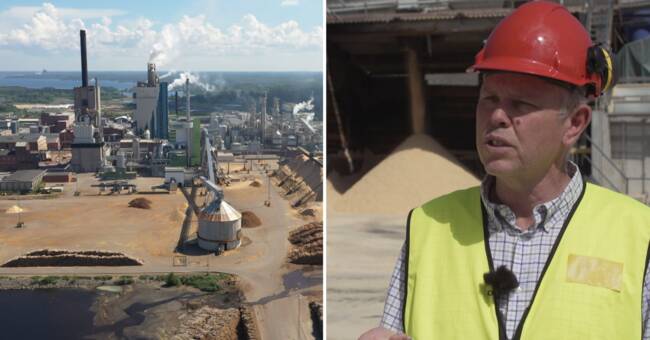At Sågverket Kastet outside Gävle, the company Setra makes sawn wood products.
Today, sawdust becomes pellets that are burned, but now Sweden's first pyrolysis factory is being built to convert it into bio-oil instead of replacing fossil car fuels.
Enough for 15,000 cars
- It will be enough according to our calculations, 15,000 cars annual consumption approximately in large numbers, says Chief Pontus Friberg chairman Pyrocell.
There are seven million cars in Sweden, so this factory, which opens in September, needs to be supplemented with many, many more if the sawdust petrol is to suffice.
The government has set the goal that more than a third of the petrol refueled in 2030 will be from bio-raw material.
- There is a lot of raw material in the form of sawdust in Sweden.
There are opportunities to build more facilities, Pontus Friberg continues.
Increased risk of corrosion in the engine
The sawdust is heated up to 500 degrees in an oxygen-free reactor.
Tar-scented pyrolysis oil comes out.
It is then refined into biogasoline by the factory's other owner, Preem.
The oil company plans a low admixture of just under 2 percent to begin with because the biofuel contains more metals that can increase the risk of corrosion on the engine.
The Swedish forest is not enough
- We need many factories and above all we need larger factories than the one that Pyrocell is because it is still a first demonstration factory.
The following factories will be larger and also use other technologies, says Erik Furusjö who is a biofuel researcher at Rise and Luleå University of Technology.
The calculations made by Erik Furusjö show that the raw material in the form of Swedish forest residues is not enough for all today's cars.
Sawdust, bark and branches cover a maximum of one third of today's car fuel needs.
Most cars must therefore run on electricity in the future to achieve the climate goals.
- Efficiency and electrification and biofuels together is what constitutes the solution, it is not an individual piece of the puzzle that is absolutely crucial for the transport sector as a whole, Erik Furusjö concludes.

